John Wayne Gacy: who was serial killer in Netflix Jeffrey Dahmer series - last words, death and victims
and live on Freeview channel 276
The series that everyone has been talking about recently is Netflix’s newest show based on the real life serial killer Jeffrey Dahmer.
While the miniseries explores Dahmer’s life, his victims and his death, another serial killer makes a brief appearance on the show - John Wayne Gacy, also known as the Killer Clown.
This is everything you need to know about Gacy.
Who was John Wayne Gacy?
Advertisement
Hide AdAdvertisement
Hide AdGacy was an American serial killer and sex offender who raped, tortured and murdered at least 33 young men and boys throughout the 70s in Chicago, Illinois.
While Dahmer was known as the Milwaukee Cannibal, Gacy was issued the name of the Killer Clown due to the fact that he regularly performed at children’s hospitals and charity events as either Pogo or Patches the Clown.
In 1968, prior to his killing spree, Gacy had been sentenced to 10 years in prison for the sexual assault of a teenage boy in Waterloo, Iowa, however he only served 18 months.
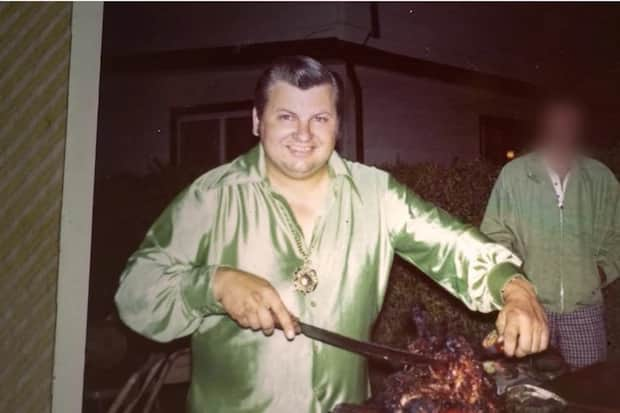

After he was granted parole in 1970, Gacy moved back to Chicago and, after spending a few months living with his mother, he purchased a house in Norwood Park Township - the property that would act as the backdrop for all of his murders.
Advertisement
Hide AdAdvertisement
Hide AdGacy murdered his first victim in 1972, had murdered twice more by the end of 1975, and by 1976 had murdered at least 30 more victims.
Gacy used a number of methods to get his victims into his home - many were lured there under the pretence of a job with his construction business, PDM Contractors, which Gacy established in 1971. Others were persuaded into his house by the promise of alcohol, drugs or money in exchange for sex.

Some of Gacy’s victims were simply taken by force, while others were also duped into believing that he was a policeman. Gacy carried a sheriff’s badge with him, and sported spotlights on the back of his car.
Once the victims were inside the house, Gacy would generally ply the young men and boys with alcohol or drugs before pretending to show them a magic trick using a pair of handcuffs.
Advertisement
Hide AdAdvertisement
Hide AdWith his victims hands restrained, Gacy would proceed to rape and torture them.
Who were his victims?
While Gacy is understood to have murdered at least 33 victims, only 28 of which have been identified.
Of his victims, Gacy buried 26 of them in the crawl space of his house and, when he began to run out of room, resorted to disposing of the bodies by throwing them off the I-55 bridge into the Des Plaines River.
These are the names of the victims that have been identified, in order of their murders:
- Timothy Jack McCoy, 16: murdered 3 January 1972, found in the crawl space
- John Butkovich, 18: murdered 31 July 1975, found in the garage
- Darrell Julius Samson, 18: murdered 6 April 1976, found under the dining room
- Randall Wayne Reffett, 15: murdered 14 May 1976, found in the crawl space
- Samuel G Dodd Stapleton, 14: murdered 14 May 1976, found in the crawl space
- Michael Lawrence Bonnin, 17: murdered 3 June 1976, found in the crawl space
- William Huey Carroll Jr, 16: murdered 13 June 1976, found in the crawl space
- James Byron Haakenson, 16: murdered 5 August 1976, found in the crawl space
- Rick Louis Johnston, 17: murdered 6 August 1976, found in the crawl space
- Kenneth Ray Parker, 16: murdered 24 October 1976, found in the crawl space
- Michael M Marino, 14: murdered 24 October 1976, found in the crawl space
- William George Bundy, 19: murdered 26 October 1976, found in the crawl space
- Francis Wayne Alexander, 21: murdered 1 December 1976, found in the crawl space
- Gregory John Godzik, 17: murdered 12 December 1976, found in the crawl space
- John Alan Szyc, 19: murdered 20 January 1977, found in the crawl space
- Jon Steven Prestidge, 20: murdered 15 March 1977, found in the crawl space
- Matthew Walter Bowman: 19, murdered 5 July 1977, found in the crawl space
- Robert Edward Gilroy Jr, 18: murdered 15 September 1977, found in the crawl space
- John Antheney Mowery, 19: murdered 25 September 1977, found in the crawl space
- Russell Lloyd Nelson, 21: murdered 17 October 1977, found in the crawl space
- Robert David Winch, 16: murdered 10 November 1977, found in the crawl space
- Tommy Joe Boling, 20: murdered 18 November 1877, found in the crawl space
- David Paul Talsma, 19: murdered 9 December 1977, found in the crawl space
- William Wayne Kindred, 19: murdered 16 February 1978, found in the crawl space
- Timothy David O’Rourke, 20: murdered between 16 and 23 June 1978, found in Des Plaines River
- Frank William Landingin, 19: murdered 4 November 1978, found in Des Plaines River
- James Mazzara, 20: murdered 24 November 1978, found in Des Plaines River
- Robert Jerome Piest, 15: murdered 11 December 1978, found in Des Plaines River
Advertisement
Hide AdAdvertisement
Hide AdThese are the details that we have about the five unidentified victims, according to the Cook County Sheriff’s website:
- Male aged 17 to 21, murdered between 15 March 1977 and 5 July 1977
- Male aged 17 to 21, murdered between August 1976 and 5 October 1976
- Male aged 21 to 27, murdered between 6 August 1976 and 15 March 1977
- Male aged 22 to 30, murdered between 13 June 1976 and 6 August 1976
- Male aged 14 to 18, murdered between 3 January 1972 and 31 July 1975
How did he get caught?
Gacy was caught after an investigation was launched into the disappearance of his final victim, Robert Piest, after he failed to return home after telling his mother about a potential contractor job.
The serial killer had picked up Piest after going to a Nission Pharmacy in Des Plaines to talk to the store owner, Phil Torf, about a remodelling job. Piest had been working at the pharmacy part time.
Torf identified Gacy as the contractor that the young boy had likely spoken to and, following a routine background check of the killer, police found that he had an outstanding battery charge against him in Chicago, and had served time in prison for the assault of a 15-year-old boy.
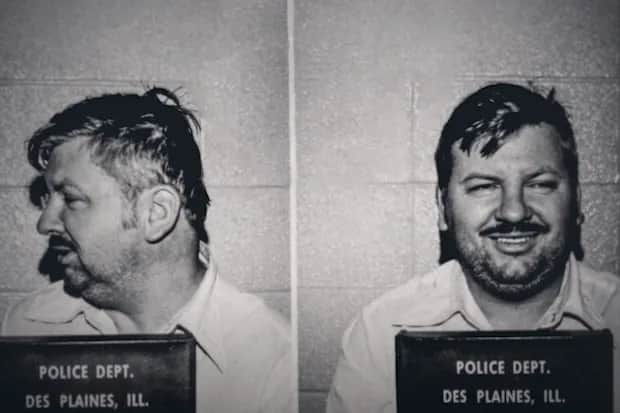

Advertisement
Hide AdAdvertisement
Hide AdThe battery charge against Gacy was in regards to the 1978 rape and torture of 26-year-old Jeffrey Rignall, who Gacy dumped unconscious in Chicago’s Lincoln Park. After making his way back to his girlfriend’s house, Rignall informed police of the assault.
While Gacy was arrested on 15 July that year and faced trial for battery against Rignall, he was not investigated by police.
After Piest was reported missing, police obtained search warrants for his home and began to observe him full time.
On 21 December 1978, Gacy was arrested by the authorities after he was seen handing cannabis whilst he was under surveillance. During a search of his home, the investigators discovered the crawl space in which Gacy buried a number of his victims.
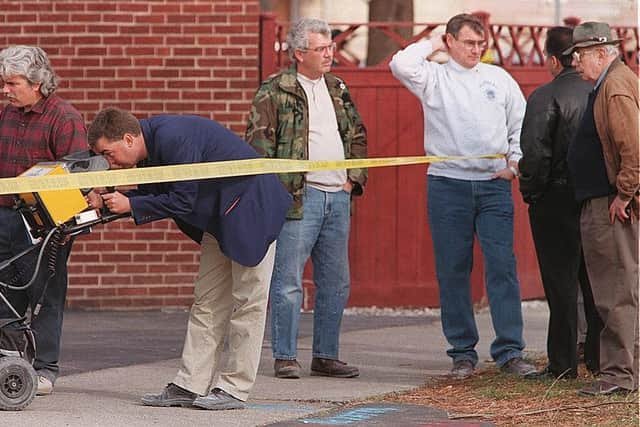

Advertisement
Hide AdAdvertisement
Hide AdOn 22 December 1978, Gacy confessed to the the murder of 32 young men, and drew police a diagram of where they would be able to find their bodies underneath his home. He also gave them the names of six of his victims.
Gacy was charged with murder, and by 30 December that year, police had found the remains of 29 bodies. He was ultimately convicted for 33 murders and sentenced to serve 12 death sentenced and 21 natural life sentences,
When did he die?
Gacy died on 10 May 1994, by way of lethal injection at Stateville Correctional Centre. He was sentenced to death on 13 March 1980 and spent 14 years on death row.
Throughout his time on death row, Gacy launched a number of motions and appeals against his conviction, and to prevent his execution, however all of them were ultimately unsuccessful.
Advertisement
Hide AdAdvertisement
Hide AdIn October 1993, the US Supreme Court denied Gacy’s final appeal, and his execution date was formally set for 10 May 1994.


On the morning of 9 May, Gacy was taken from the Menard Correctional Centre to Stateville Correctional Centre to carry out his execution. For his last meal, the serial killer ordered a bucket of KFC, fried shrimp, french frie, fresh strawberries and a Diet Coke.
He partook in a prayer with a Catholic priest before then being escorted to the execution chamber.
Following complications with the lethal injection and the IV tube, Gacy was pronounced dead at 12:58am on 10 May 1994, with the procedure itself taking 18 minutes.
His last spoken words were reportedly: “Kiss my a*s.”
Was he married - did he have children?
Gacy was married twice in his life, and had two children.
Advertisement
Hide AdAdvertisement
Hide AdIn 1964, Gacy became engaged to Marlynn Myers, a co-worker of his at a shoe company they both worked at. They married in September that year, and Myers gave birth to their son in February 1966 and daughter in March 1967.
On the day that Gacy was convicted of assault in 1968, Myers petitioned for divorce and requested that she be granted their home, property, the sole custody of their two children and alimony. The court ruled in her favour, and Gacy and Myers’s divorce was finalised on 18 September 1969. Gacy never saw Myers or his children again.
In 9171, Gacy got engaged to Carole Hoff, a woman that he had briefly dated in high school. The pair married on 1 July the following year.
While Gacy and Hoff never had any children together, Hoff had two young daughters from a previous marriage. Hoff asked for a divorce in 1975, which was finalised on 2 March 1976.
Who played the serial killer in Jeffrey Dahmer series?
Advertisement
Hide AdAdvertisement
Hide AdGacy makes a brief appearance in the new Netflix series that everyone has been talking about recently - Monster: The Jeffrey Dahmer Story.
The serial killer is portrayed in the Netflix miniseries by Dominic Burgess, an English actor who you may recognise from his roles in films and TV shows like Dr. Death, The Magicians, Santa Clarita Diet, The Good Place, Queen of the South, The Flash, Feud: Bette and Joan, Breaking News in Yuba County and Ma.
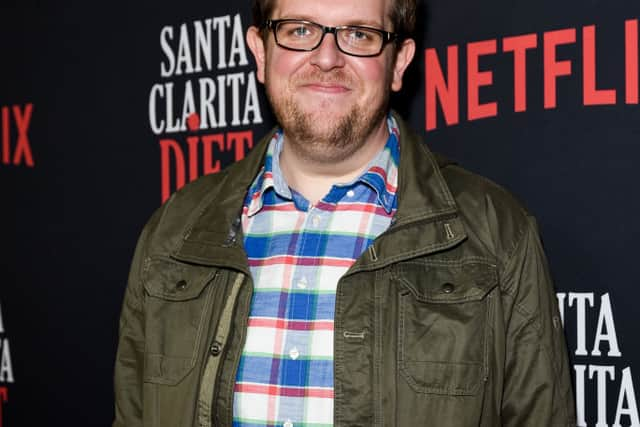

Burgess was born in Stoke-on-Trent on 29 July 1982, and attended Newcastle-under-Lyme School before enrolling at the Academy of Live and Recorded Arts and winning a Dance and Drama Awards Scholarship for a three year acting course.
He made his TV debut in an episode of Doctor Who and in 2007 moved to Los Angeles, where he landed roles in the likes of Agents of S.H.I.E.L.D, It’s Always Sunny in Philadelphia and The Leftovers.
Comment Guidelines
National World encourages reader discussion on our stories. User feedback, insights and back-and-forth exchanges add a rich layer of context to reporting. Please review our Community Guidelines before commenting.
